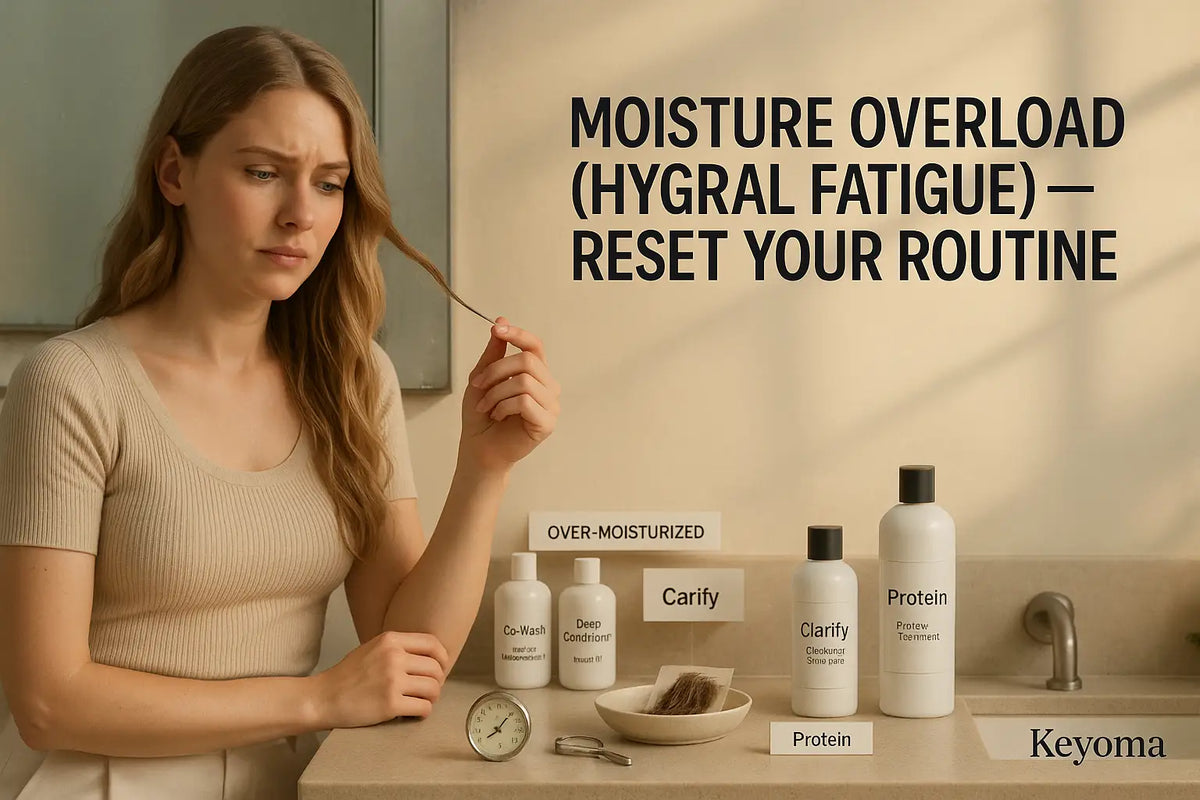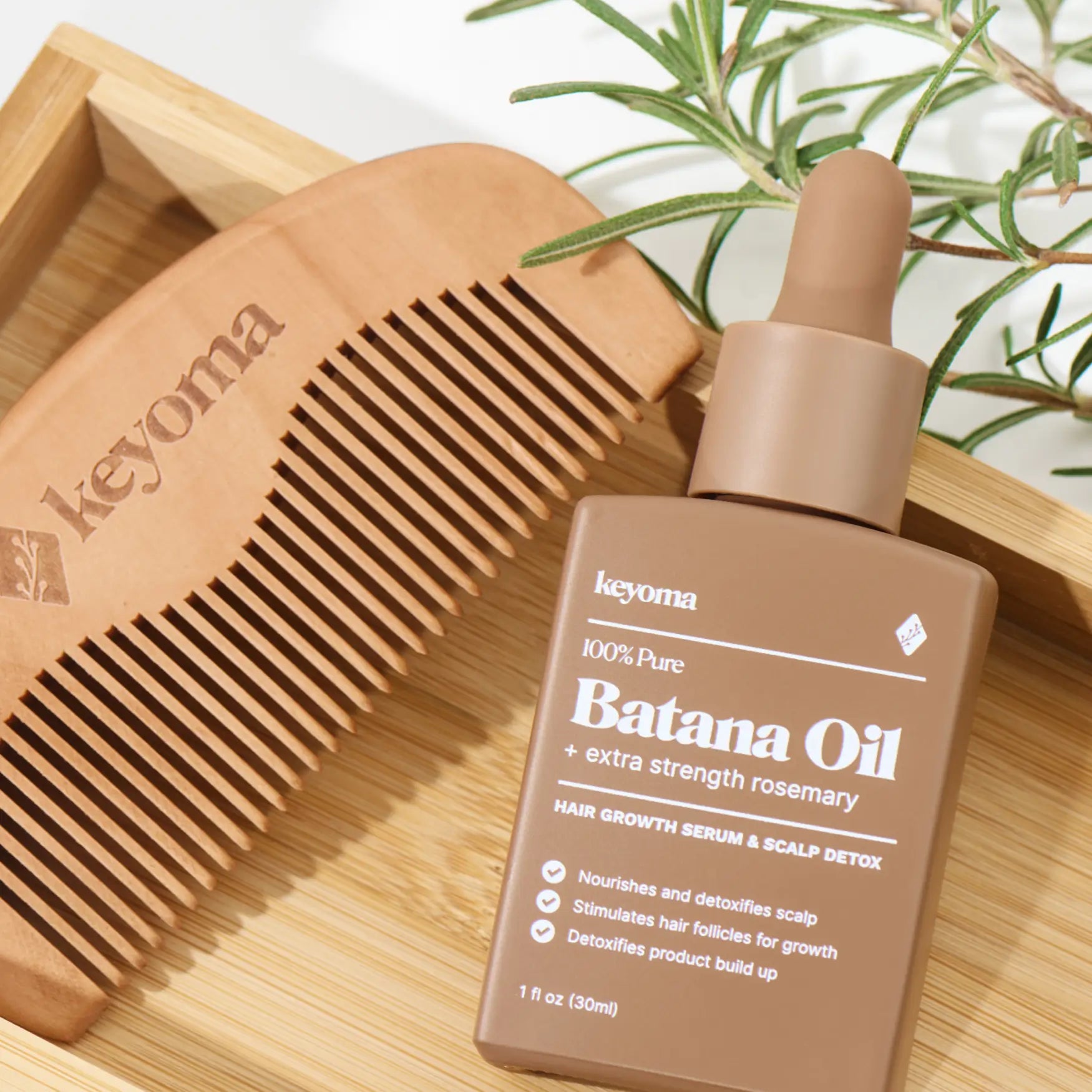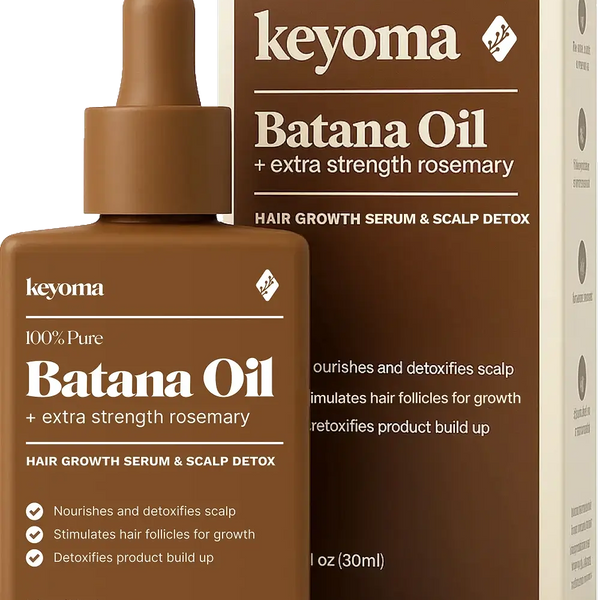In this article
When hair gets more moisture than it can handle, it can look puffy, feel limp, and lose curl hold. The good news is you can correct this. Use this guide to spot moisture overload and learn how to bring your hair back into balance.
Key Takeaways
-
Moisture overload softens hair too much, reducing structure and curl retention.
-
Typical signs include mushy feel, limp curl pattern, extra frizz, and flat roots.
-
Rebalancing steps favor clarifying, lighter conditioning, and periodic protein use.
-
Protective styling while wet and frequent co-washing can keep hair overhydrated.
What Is Moisture Overload in Natural Hair?
If you have natural hair, you probably focus on keeping curls hydrated. Overdoing hydration may not seem likely, yet it happens. We can help you spot it and adjust before it affects your curl pattern.
Moisture overload, also called hygral fatigue, happens when your hair absorbs too much water. Using many ultra-moisturizing products can tip the balance. Hair becomes overly soft, stretchier than usual, and easier to weaken.
Common Signs of Moisture Overload
If moisture crowds out needed strength, you lose your protein moisture balance. Watch for these changes and adjust your routine sooner rather than later.
You may notice the following symptoms when hair is overhydrated:
-
A shed strand stretches and keeps stretching without springing back, then tears.
-
Hair feels mushy, floppy, and too soft to hold styles well.
-
Curls lose definition and fall flatter than usual, even after styling.
-
Frizz increases, often a fluffy, soft kind of frizzy hair
-
Lengths feel weighed down as if you applied too much product.
These signs point to a protein and moisture imbalance. With the right changes, you can regain bounce and definition.
Common Causes of Moisture Overload in Curly & Textured Hair
Curly hair can slip into moisture overload without warning. If your texture looks different and feels too soft, a few habits may be driving it.

These are frequent causes to check in your routine:
Co-Washing Too Often
Co-wash can be useful, but using it very frequently can overhydrate your lengths. You will get cleaner results if you rotate in a lathering cleanser.
Leaving Deep Conditioner On Too Long
Deep treatments feel great. If you use them too often or leave them on for long sessions, you can flood hair with moisture and weaken hold.
Styling Wet Hair Into Protective Styles
Setting protective styles while hair stays wet can trap extra water. That trapped moisture keeps the shaft softer than you intend.
Moisturizing Without Protein
Some curl products focus on hydration and skip strengthening ingredients. Protein from keratin or plant sources helps maintain structure. Keep in mind that protein overload can happen if you push too far the other way.
How to Rebalance Over-Moisturized Hair
If your curls or waves seem overmoisturized, follow the steps below over your next few wash days. You will give hair a fresh start and restore strength.

1. Clarify Your Hair
Use a clarifying shampoo to deep clean scalp and lengths. You will remove buildup and set up the next steps to work better.
To clarify, you can use either option:
-
A sulfate-free clarifying shampoo
-
A sulfate shampoo
Many people clarify once or twice a month. If you only co-wash, you may need to clarify more often to avoid buildup.
2. Stop Deep Conditioning
If hair is overmoisturized, skip deep conditioners for now. Not all hair needs them regularly; a standard rinse-out may be enough, especially if your hair is already soft.
Even formulas that include protein still deliver lots of moisture. Pausing them helps you restore balance.
3. Swap Co-Wash for a Low-Poo
Co-wash is cream based. When you rinse it through, it behaves like a conditioner. If you also deep condition and use a rinse-out, you are conditioning several times in one routine.
Switch to a gentle lathering shampoo for a deeper clean and less moisture load. You can find mild sulfate-free options that still cleanse well.
4. Keep Regular Conditioning Minimal
Leaving conditioner on too long can weigh curls down. Apply to ends and lengths first, then use a little leftover product with plenty of water to detangle the top. Rinse once knots are out.
Tip: Add more water before you reach for more conditioner.
5. Use Less Curl Cream or Leave-In
Greasy or heavy-looking lengths often point to too much cream. Start with a small amount and focus on areas that need it most.
Use a tiny dollop for the underside, ends, and mid-lengths. Avoid roots, or only touch them with leftover product after coating the rest.
If your hair gets overmoisturized easily, pick one styler. You may be fine skipping leave-in and going straight to your gels or foams.
6. Add Products With Protein
After you reduce heavy moisture, introduce protein-based products as needed. They help restore structure so curls keep their shape between washes.
Protein supports strength and elasticity. Fine hair often benefits from more frequent light protein than medium or coarse hair.
Reset Your Balance This Week with Keyoma
Start with a reset wash. Use a clarifying shampoo once, then apply a light conditioner only to your ends. Next wash day, keep conditioner brief and try one protein-rich styler. On day three or four, style with less cream and more water for slip.
If curls feel stronger, stick with this pattern for two weeks before adding richer products back in. When you want more tips, explore our blog for more hair care routines and ideas you can use today.
Featured Product
100% Pure Batana Oil + Rosemary









